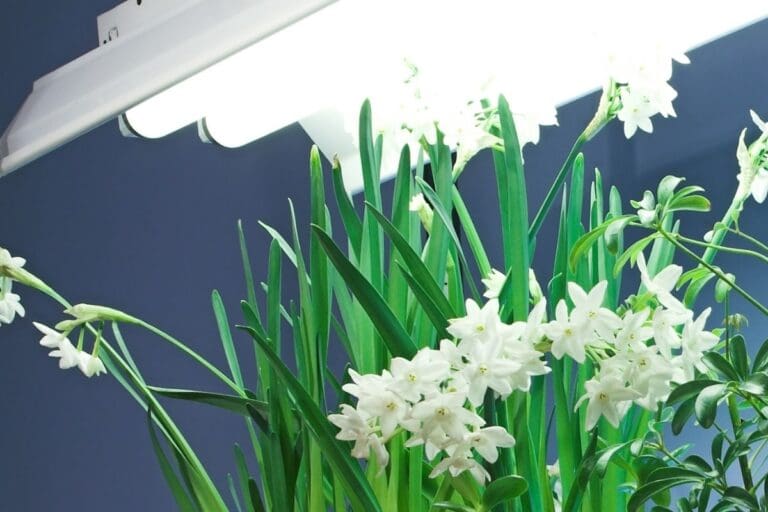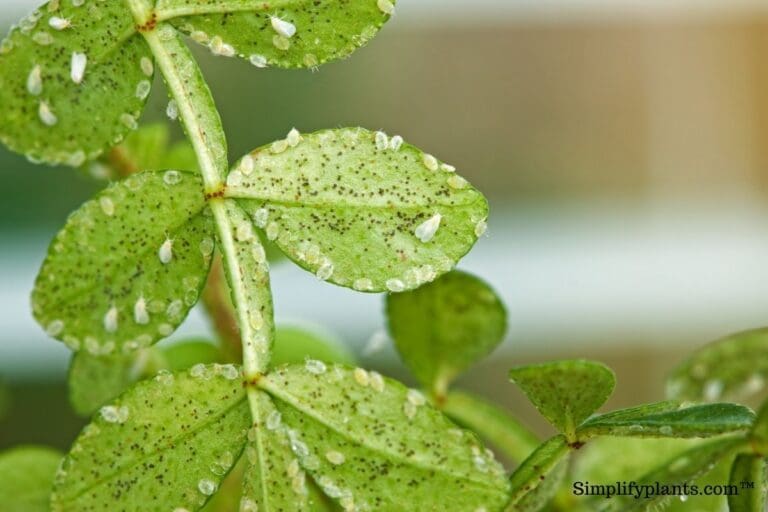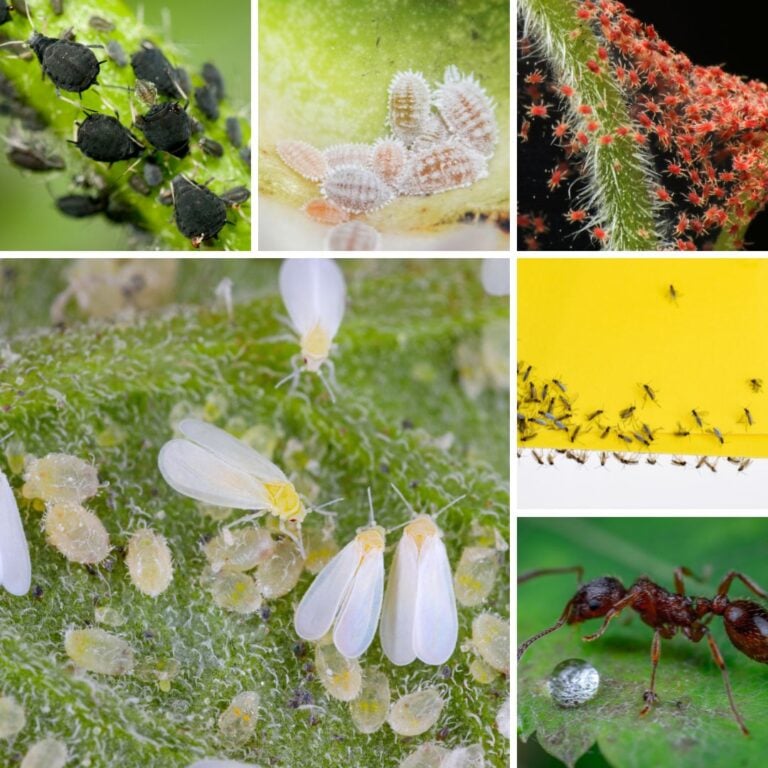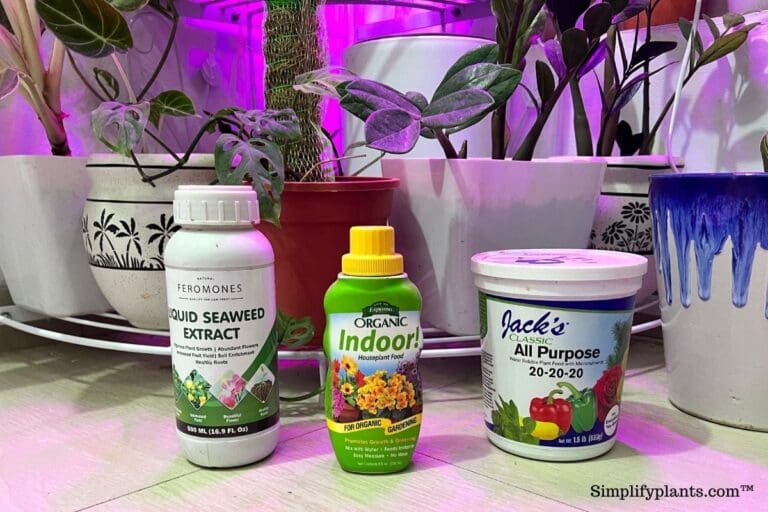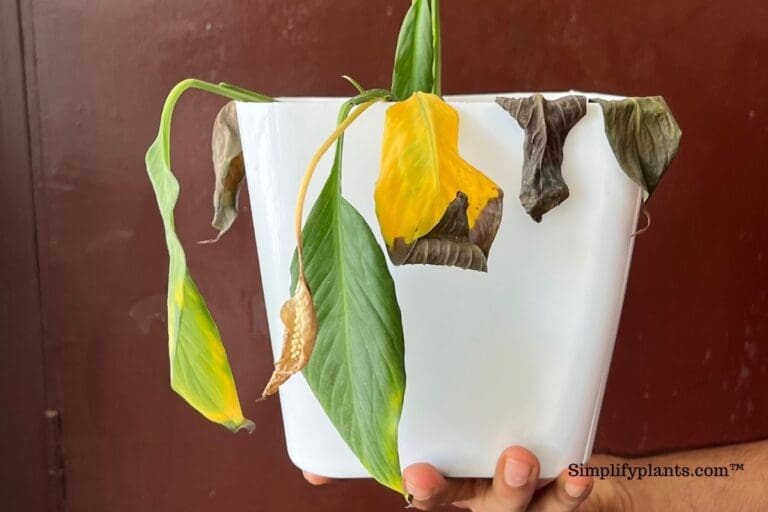How Often Do You Fertilize Indoor Plants? (When+What To Use)
Indoor plants add beautiful greenery to your interiors. Taking good care of them is necessary if you want it forever. Fertilizing can be tricky as we get confused about the quantity and end up overdoing it. But you should also not deprive the houseplants of fertilizers. It is needed to make sure your plant is receiving all the nutrients needed for healthy growth.
So, in this article, we shall discuss how often should you fertilize your indoor plants and how to do it appropriately.
As a general rule, you should fertilize your indoor plants once a month with a balanced liquid fertilizer. If you are using a slow-release fertilizer, then use them once every 3 months. However, stop fertilizing during the winter months as most plants remain dormant during that period.
There are a few things you need to learn about fertilization. If you are an indoor gardener, this article will help you know all information regarding fertilizing houseplants.

Please note: Simplify Plants is reader-supported. Some links in the post are affiliate links and I get a commission from purchases made through links in the post.
Why is fertilizing necessary?
The plants consume water and nutrients from the root system. While growing plants outdoors, the nutrients get replaced by the decomposition of organic matters and other processes. This is a natural process.
But while growing indoor plants, this natural process does not occur. In the potting soil, the nutrients don’t get replaced naturally. This is the reason fertilizing is essential. Fertilizers help them to get all the essential nutrients.
While preparing the potting soil, use ingredients that are nutritious for the plant. But with every watering, the nutrients get washed away. So, if fertilizers are not provided to the indoor plants, they won’t get nutrients to grow strong and healthy. There won’t be any blooms either.
Fertilizers help in keeping the plant healthy and appealing with abundant blooms.
Types of fertilizers
There are various types of fertilizers – liquid or water-soluble fertilizer, slow-release or granular fertilizer, sticks, and tablets. Out of all the types, the liquid fertilizer is excellent.
They are easy to spread in soil, and they are easily absorbed. But if spilled more, it can harm the plant.
Slow-releases are good too, but they take a lot of time to get absorbed into the soil. They are good because they take the nutrients slowly as per their need.
Now let us discuss them in brief:
Liquid fertilizers
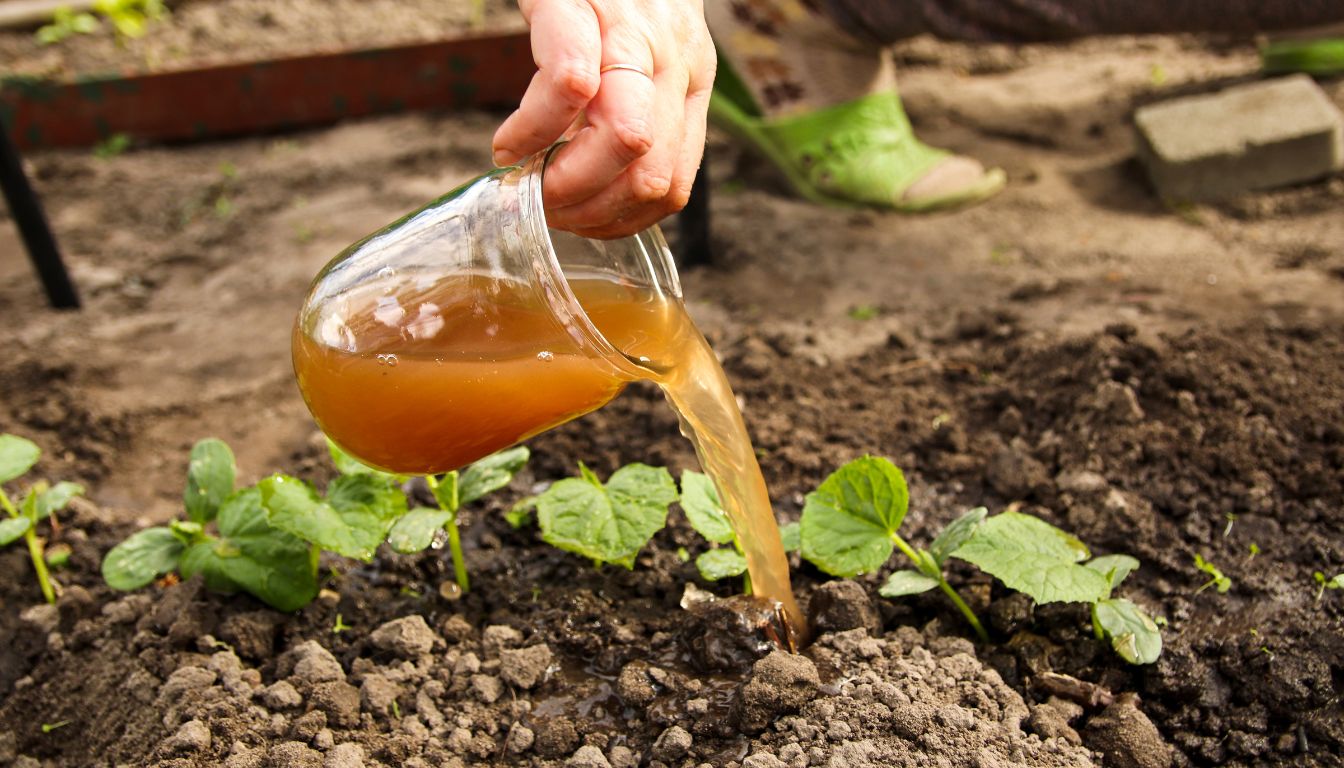
These are water-soluble fertilizers that are diluted with water and then applied to the plants. Most of the time, this type of fertilizer is used for houseplants.
That is because they spread their nutrients evenly and quickly. They are easy to absorb and spread fast into the soil.
However, you will need to apply liquid fertilizers frequently as they supply nutrients to the soil for not more than two to three weeks.
So, it is necessary to apply liquid fertilizers once a month. Moreover, it can get a little messy if spilled by mistake while applying.
Granular fertilizers
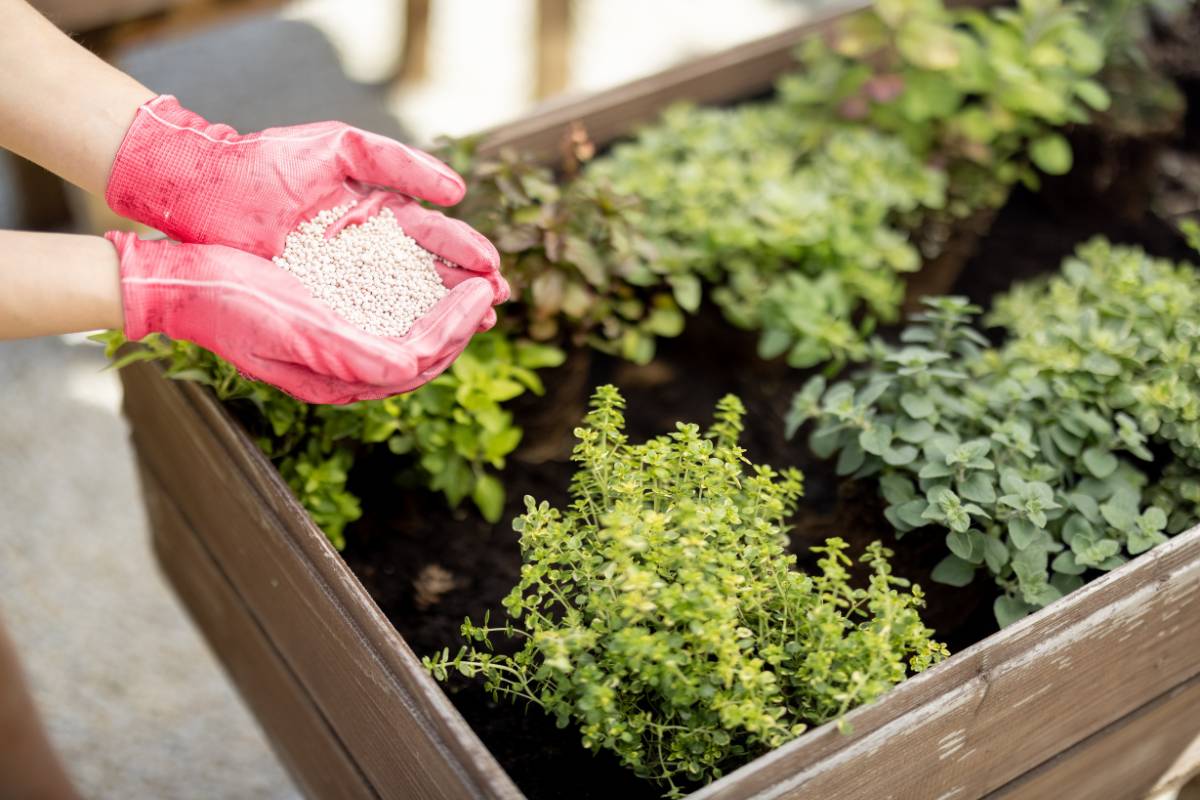
The dry pellets are spread in the soil and then covered with topsoil. However, these are used primarily for outdoor plants, but you can also use them for houseplants.
When applied, they release all their nutrients rapidly once watered. This makes it difficult to control the amount of consumption at once. Although these fertilizers can be used, it is not the best choice.
Slow-release fertilizers
This type of granule is the favorite one of all types of gardeners. They are coated with time-release shells. When applied, they release nutrients very slowly.
The plants absorb their nutrients very slowly as per their need. They release nutrients to all parts of the soil and roots. Once applied, it will last up to 8 to 9 months. Although they are costly, because of their long-lasting process, you can easily manage the expense.
Sticks
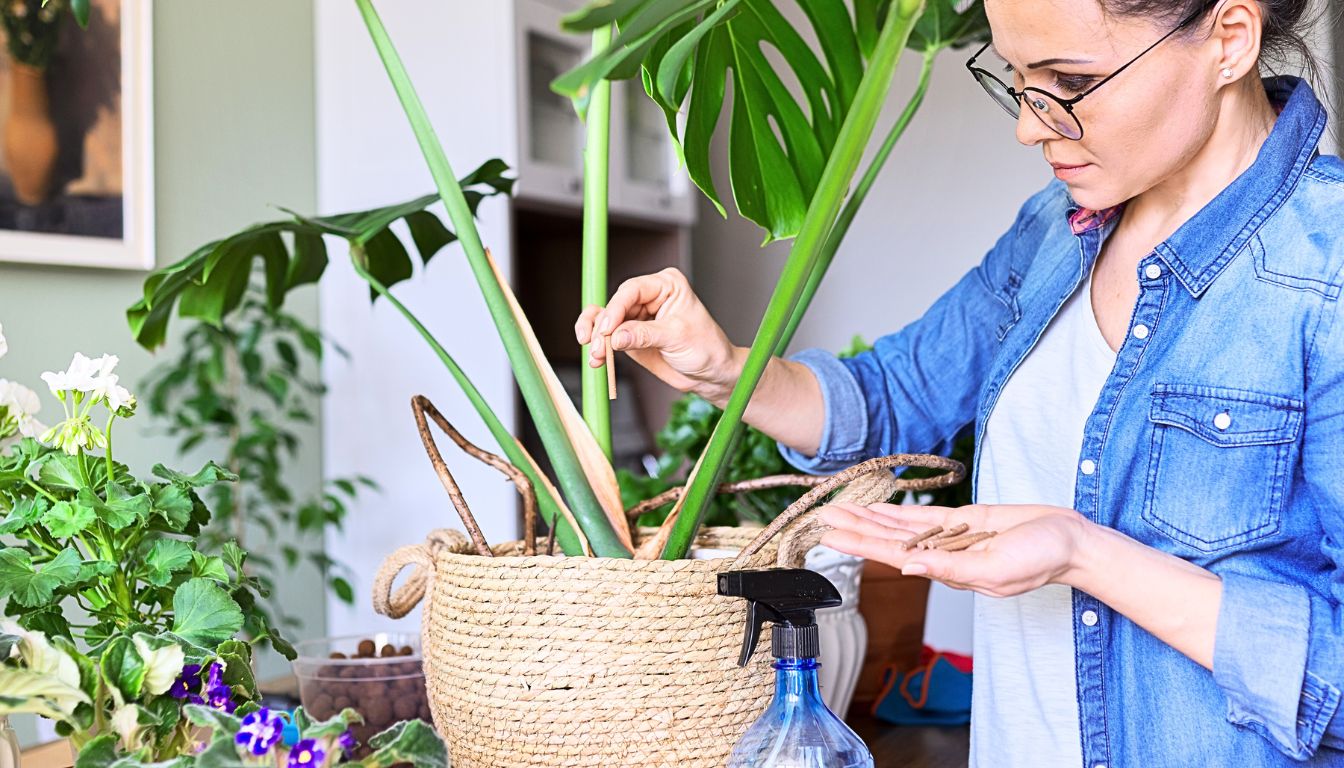
Just like the slow-release fertilizers, sticks are mixed into the soil. When applied, they release the nutrients slowly into the soil. There is no mess in using this fertilizer. They will last up to 100 days.
While applying, read the instructions carefully as you don’t want to apply too much and overfertilize your plants.
Tablets
These can be used as water-soluble fertilizers. They are diluted in the water and made into liquid fertilizer. They are easy to apply and absorb. Moreover, they will last more than the actual liquid fertilizers.
How to choose the correct fertilizer?
Before choosing the correct fertilizer, it is necessary to understand certain things.
The first thing you should know while choosing the right fertilizer for your houseplant is the NPK value. NPK stands for Nitrogen (N), Phosphorous (P), and Potassium (K). All fertilizers consist of these three key macronutrients along with other micronutrients.
These nutrients are essential because:
- Nitrogen helps in promoting the healthy growth of the leaves. Nitrogen makes up parts of the chlorophyll in large amounts. It allows the plant to absorb sunlight so that you can turn it into useful energy.
- Phosphorous helps in the growth of the root system. It also promotes abundant blooms.
- Potassium helps develop the stems and stalks, promoting the healthy and rapid growth of the plant. Moreover, it supports the overall cellular functions of the plant.
Besides these, micronutrients like calcium, iron, magnesium, sulfur, manganese, boron, zinc, and molybdenum help encourage the plants’ overall growth, health, and development.
Most of the time, balanced fertilizer is used for the growth of plants. A balanced fertilizer means that the NPK value should be equal. If a fertilizer says that its NPK value is 10:10:10, the fertilizer consists of 10% Nitrogen (N), 10% Phosphorous (P), and 10% Potassium (K).
Rest are the micronutrients. By this value, you will be able to understand the right fertilizer for your particular houseplant. Now that you are informed about the NPK values, you can choose the suitable fertilizer ideal for your houseplants.
The best fertilizer for indoor plants

The best fertilizer for all houseplants is a balanced fertilizer, i.e., an NPK value of 10:10:10 or 20:20:20. Different houseplants sometimes demand fertilizers with different ratios.
Here are my top picks:
However, you can choose any fertilizer according to the type of your plant. What I mean to say is:
For flowering houseplants: If you have a houseplant with flowers, you can look for a fertilizer that goes high in phosphorous content. Phosphorous promotes abundant flowering.
For non-flowering houseplants: If you are growing houseplants that do not grow any flowers and only focus is the luscious green leaves, you should look for a fertilizer that goes high in nitrogen. A balanced fertilizer will also work well.
Now, coming to the best type of fertilizers, we have already learned various types – liquid, granular, slow-release, sticks, and tablets. All these types are suitable for your houseplants. But still, there are things to understand before choosing the best one for your plant.
Liquid fertilizers are best to use when you are taking care of your plant regularly. You always remember and have enough time to fertilize them regularly without fail, and liquid fertilizers are the best choice. Liquid fertilizers are in any way the best because they are easy to absorb and spread nutrients evenly.
Slow releases are also the best choice. If you are running out of time, you can apply this kind of fertilizer. You don’t have to worry about fertilizing for the next 8 to 9 months.
Fertilizing tablets, too, are a good choice for your plant. Even though they are used as liquid fertilizers by dissolving into water, they can last longer than a regular liquid fertilizer.
Other than commercial chemical fertilizers, which are found abundantly in all markets, you can also use organic fertilizers for your houseplants. They are chemical-free and can also be bought from the market.
For example, for Nitrogen, you can use fish emulsion, cottonseed meal, alfalfa meal; for phosphorous, you can use rock phosphate, bone meal; for potassium, you can try kelp meal and granite meal.
How often should you fertilize indoor plants?
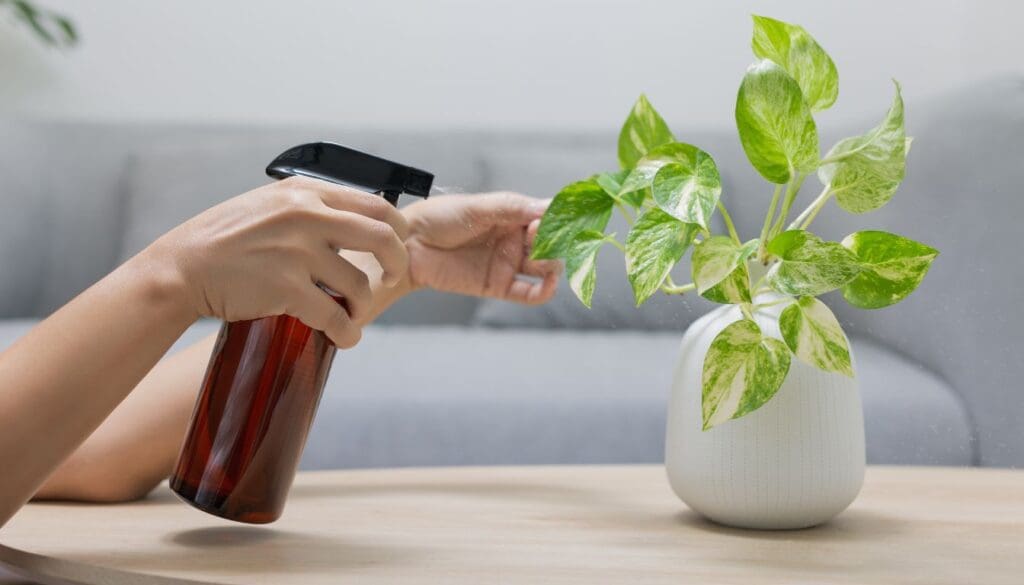
Generally, the indoor plants need to be fed with fertilizers once a month, starting from March and continuing until September. After that, they do not need fertilizing during the cold months.
If you want to follow a good schedule of fertilizing, we will help you with that too.
During the Spring season
You can start with fertilizing your indoor plant about eight weeks before the last frost. While applying the fertilizers in this season, make the first three applications a quarter of the regular strength. This is the time when the houseplants start growing.
During the Summer season
During the summers, you can fertilize by following a regular fertilizing program. The frequency of summer applications should be based on the fertilizer type that you are using.
For example, you should use a liquid fertilizer every two weeks or every month. You should use less granular fertilizer, let’s say for once in every 1-2 months.
As slow-release fertilizers last for a long time, using them every 3-4 months will do the job. During the summers, the houseplants are in their active growth stage. So, frequent application of fertilizer will help the plant grow well.
During the Fall months
Decrease the application eight weeks before the first expected frost. During the winters, they don’t need fertilizers. So, once winter approaches, you can slowly stop fertilizing.
During the winter months
During the winters, most houseplants go in their dormant stage. They do not need fertilizing during this season. If you fertilize them during the winters, it will cause overfertilization, and your plant will show signs like salt burn and brown leaf tips.
Keep certain things in mind regarding fertilization:
- If your region doesn’t get frost or harsh winters, you can fertilize your plant in small amounts. But the strength and frequency of application should be half of the summer application.
- If your region has a warm climate all the time, keep fertilizing your plants following the summer schedule.
- Some slow-growing plants do not need frequent fertilizing, be it any season. It is better to fertilize them after every three months. If you apply before that, you would be overfertilizing it. The best time for fertilizing them is once at the start of spring and once in summer.
- Fast-growing plants need more fertilizers. You should fertilize them once per month during the summers and springs as it is their active growing time. During the winters, they cannot absorb nutrients as they become dormant. So avoid fertilizing during cold.
Homemade fertilizers

There are a lot of commercial fertilizers in the market. But some of us do not like using them because they have high chemical content, which can be harmful to the houseplants.
In such conditions, you can use homemade organic fertilizers to fertilize your plant.
Eggshells
Eggshells will provide your plant with good calcium. These will also decrease the acidity of the soil. Add crushed eggshells to your potting mix while preparing the mix.
You can add the crushed eggshells to boiled water. Soak them overnight and use the water by pouring them into the soil.
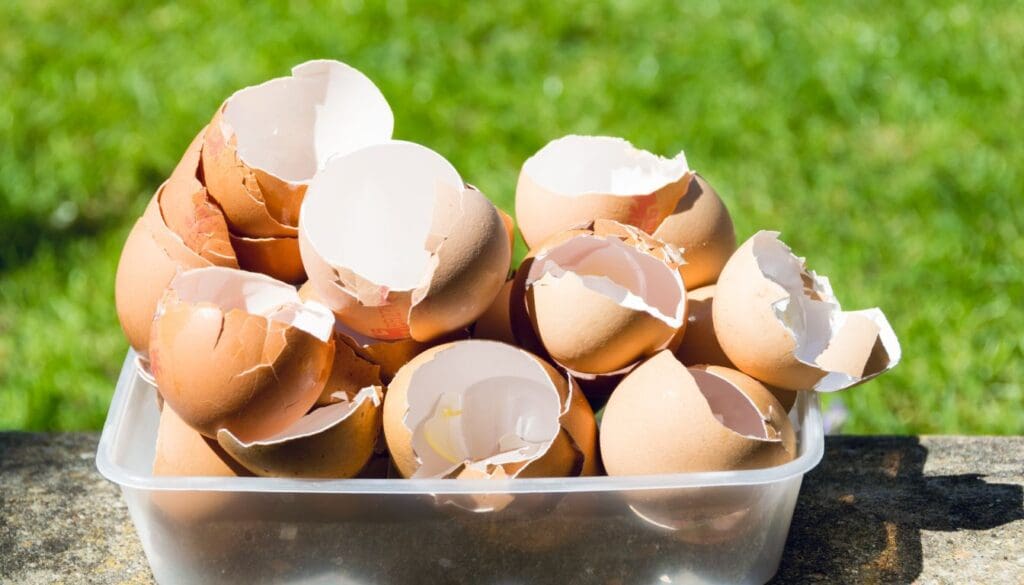
Banana peels
There are three ways of using banana peels:
- Place the banana peel strips on the soil.
- Cut the banana peels into tiny pieces and mix them with the soil.
- Make a puree of the peels with water and apply them to the potting soil.
The peels will start decomposing slowly and will eventually release the nutrients into the soil.
The banana peels are high in potassium content. It also has a small quantity of nitrogen, phosphorous, and magnesium. Being a kind of slow-release fertilizer, they are an excellent choice for your houseplant.
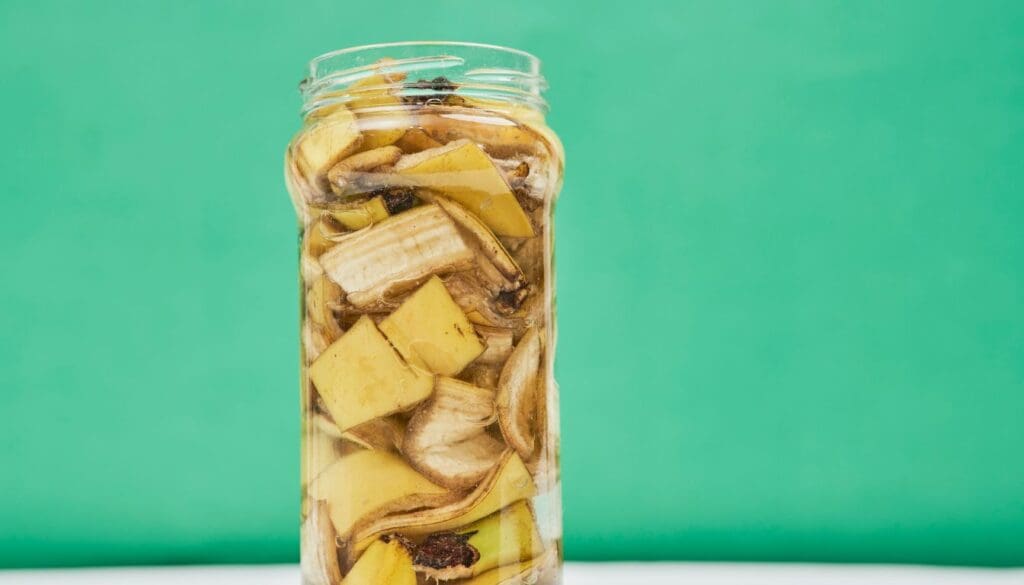
Coffee grounds
Coffee grounds are excellent to use in place of fertilizers. If your houseplant is a non-flowering plant and needs good plant growth and its foliage, coffee grounds are a great choice. They are high in nitrogen but low in phosphorous and potassium.
You can use coffee by mixing it with the potting soil. You can make a liquid fertilizer out of it. Soak them in water for a week, strain, and use the water for fertilizing.

Green tea
If you own acid-loving houseplants, green tea will work best for them. The tannic acid in the green tea leaves decreases the pH level in the soil, making the soil acidic. The high nutrient concentrations in green tea will help in the healthy growth of the plants.
You can directly apply the twice brewed green tea to the plants after it cools down, or you can store and compost them for later use.
Aquarium water
Aquarium water is a good source of fertilizer for your houseplants. The fishes release nitrogen waste in the water. The water becomes rich in natural nutrients from the decomposing food and waste of fish.
Applying this water will give your plant a good amount of nitrogen, promoting good growth in the plant. Every time you change the aquarium water, apply it to the soil as fertilizer for your plants instead of throwing the old water.

How to fertilize indoor plants?
Before you fertilize your plant, remember never to fertilize in dry conditions. Constantly water the plant well before fertilizing. It will help spread the fertilizer properly to the entire root system and encourage easy absorption of the nutrients.
Different types of fertilizers have different usage ways:
- For liquid fertilizers, mix ½ or ¼ teaspoon of fertilizer with 1 gallon of water and then use it to the plants.
- For slow-release or granules, sprinkle the fertilizers as recommended in the labels on the topsoil and then mix them with the soil. Water the plant very well to help them activate and spread everywhere equally.
- For stick fertilizers, press the sticks into the soil gently and evenly. Make sure there is no less or more space in between the sticks. Push them deep into the potting soil, about one inch, and cover them with soil. Now, water them well to activate.
- For tablets, mix one tablet with water in one gallon-sized watering can.
What happens if you overfertilize the indoor plants?
It is better to use less fertilizer than ending up overfertilizing the houseplants. If you use less quantity, there won’t be any severe harm to your plants. But overfertilizing has a lot of harmful effects on your plants. Some of them are:
- Stunted growth
- Yellow leaves
- Brown spots due to burns
- Salt accumulation, ultimately causing brown tips and edges
- Vulnerable to pests and diseases
- Eventually death of the plant
When over-fertilization causes salt accumulation, you can flush off the soil. First of all, it shows signs like brown tips. For flushing, allow the soil to dry up completely.
Ensure that the pot has drainage holes. Now water your plant very well. Allow the 20-30% of water to drain through the potholes. Along with the water, all the salts will pass away through the drainage holes.
Water the plant again, and this time, do not allow the water to drain out of the holes.
Get rid of the affected leaves. Avoid fertilizing your plant for some time. Once your plant heals, you can fertilize them according to its needs and schedule.
Final words
Fertilizing the indoor plants improve their charm and vigor with prolific growth and blooms. We sometimes ignore fertilizing. Just like water and light, fertilizing is also an important part. All living things need nutrients to stay fit and healthy. So it would help if you fertilize your indoor plants periodically.
Choose the right fertilizer for your plant. A balanced one is always suitable. Consult the experts if you want to use something else and use fertilizers preferred only for your particular houseplant.
Either organic or chemical, the choice is yours. While using chemical ones, be very careful. Nutrients are highly concentrated. They are mainly used because they are readily available and cheap.
I would recommend using organic fertilizers as they are much better. They are very gentle, free of chemicals, environment-friendly, and of course, affordable. You will not even have the risk of overfertilization, salt accumulations burns.
FAQ
Can you fertilize all year?
If you live in a region of warm weather and no frost, you can fertilize your plants all year. Only during winters decrease the strength much less than summers.
When to fertilize after repotting?
It is recommended not to fertilize the plants after repotting, at least for six weeks. When they are transplanted, they are already planted in a new fresh soil rich in nutrients. So fertilizing is not necessary. Moreover, it will decrease the chances of root burns.
Recommended Garden Supplies
| Product Image | Our Recommended Gardening Supplies | Check Offers! |
|---|---|---|
Top Top
Top
Top
Top
Top
Top
Top
Top | rePotme Houseplant and Tropical Classic Potting Soil Mix | Check Offer On Amazon |
 Top
Top
Top
Top
Top
Top
Top
Top | Espoma Organic Indoor Plant Food | Check Offer On Amazon |
 Top
Top
Top
Top
Top
Top
Top
Top | GooingTop LED Grow Light 6000K Full Spectrum Clip Plant Growing Lamp | Check Offer On Amazon |
 Top
Top
Top
Top
Top
Top
Top
Top | Soil Moisture Meter | Check Offer On Amazon |
 Top
Top
Top
Top
Top
Top
Top
Top | Govee Hygrometer Thermometer, Bluetooth Enabled! | Check Offer On Amazon |
 Top
Top | LEVOIT Humidifiers for Large Room(Best For Plants) | Check Offer On Amazon |
 Top
Top
Top
Top
Top
Top
Top
Top | Upgraded DIY Automatic Drip Irrigation Kit, 15 Potted Houseplants Support | Check Offer On Amazon |
 Top
Top
Top
Top
Top
Top
Top
Top | Stainless Steel Heavy Duty Gardening Tool Set | Check Offer On Amazon |
 Top
Top
Top
Top
Top
Top
Top
Top | Bonide Insecticidal Soap | Check Offer On Amazon |
 Top
Top
Top
Top
Top
Top
Top
Top | Bonide 32 oz Spray Neem Oil for Organic Gardening | Check Offer On Amazon |
 Top
Top
Top
Top
Top
Top
Top
Top | Garden Safe Fungicide | Check Offer On Amazon |


